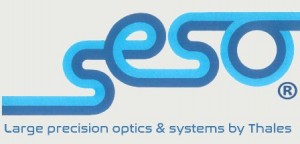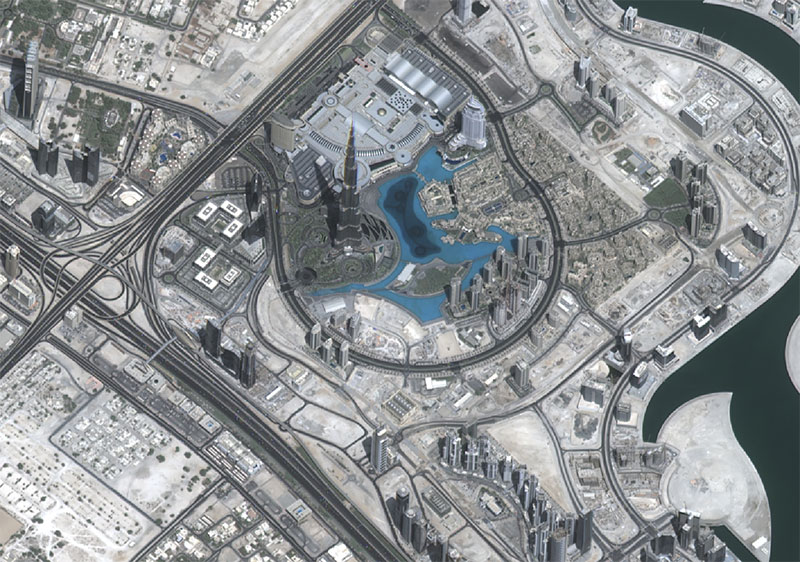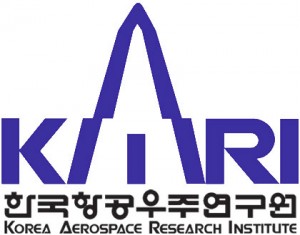KOMPSAT 3 – Korsch Telescope
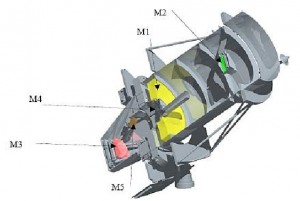 Multi-Purpose Satellite for the Korean Aerospace Research Institute Thales SESO was responsible for the mechanical design, the manufacturing, the assembly of the flexures, the environmental tests and the integration on the carbon Fiber Reinforced baseplates. This system was composed of 5 mirrors on a Korsch-type telescope. 2 Flight Models and a prototype were delivered.
Multi-Purpose Satellite for the Korean Aerospace Research Institute Thales SESO was responsible for the mechanical design, the manufacturing, the assembly of the flexures, the environmental tests and the integration on the carbon Fiber Reinforced baseplates. This system was composed of 5 mirrors on a Korsch-type telescope. 2 Flight Models and a prototype were delivered.
Thales SESO Mirrors in orbit
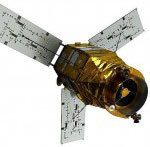 The last mirrors were delivered in 2011. The first satellite was launched in May 2012 from the space center of Jaxa in Japan, and the second in March 2015.
The last mirrors were delivered in 2011. The first satellite was launched in May 2012 from the space center of Jaxa in Japan, and the second in March 2015.
It achieves a resolution of 0.7m and has a field of view of 16.8km Illustration of the KOMPSAT-3 spacecraft (image credit: KARI)
A Korsch-type telescope
 An on-axis Cassegrain telescope with
An on-axis Cassegrain telescope with
– a primary mirror of more than 800mm diameter (M1 concave)
– secondary mirror of 200mm diameter (M2 convex)
– A tertiary off-axis mirror (M3 concave off-axis)
– An on-axis M4 aspherical concave mirror
– A folding flat mirror (M5 flat), for reasons of overall volume limitations.
Our expertise in Space applications
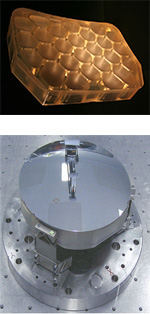 – Low weight M1, M2, M3 were lightened up to 85% its original weight by removing material from the back of the Zerodur™ mirrors.
– Low weight M1, M2, M3 were lightened up to 85% its original weight by removing material from the back of the Zerodur™ mirrors.
– High stability The material Zerodur™ was selected for its extremely low CTE, which makes it the best candidate to prevent thermo-elastic deformation due to sharp temperature changes in orbit (alternating between direct sun exposure and in the shadow of the earth). The flexures used to mount the mirror to its support are made in Invar to match the CTE of the Zerodur™
– High Throughput M1, M2 M3 and M4 mirrors are coated in our facility with a space qualified protected silver coating to maximize the throughput. M5 mirror is coated with a dielectric coating.
Low WFE for the sharpest image
More information on KOMPSAT-3:
https://directory.eoportal.org/web/eoportal/satellite-missions/k/kompsat-3
<< Back to listKOMPSAT 3 – Korsch Telescope
 Multi-Purpose Satellite for the Korean Aerospace Research Institute Thales SESO was responsible for the mechanical design, the manufacturing, the assembly of the flexures, the environmental tests and the integration on the carbon Fiber Reinforced baseplates. This system was composed of 5 mirrors on a Korsch-type telescope. 2 Flight Models and a prototype were delivered.
Multi-Purpose Satellite for the Korean Aerospace Research Institute Thales SESO was responsible for the mechanical design, the manufacturing, the assembly of the flexures, the environmental tests and the integration on the carbon Fiber Reinforced baseplates. This system was composed of 5 mirrors on a Korsch-type telescope. 2 Flight Models and a prototype were delivered.
Thales SESO Mirrors in orbit
 The last mirrors were delivered in 2011. The first satellite was launched in May 2012 from the space center of Jaxa in Japan, and the second in March 2015.
The last mirrors were delivered in 2011. The first satellite was launched in May 2012 from the space center of Jaxa in Japan, and the second in March 2015.
It achieves a resolution of 0.7m and has a field of view of 16.8km Illustration of the KOMPSAT-3 spacecraft (image credit: KARI)
A Korsch-type telescope
 An on-axis Cassegrain telescope with
An on-axis Cassegrain telescope with
– a primary mirror of more than 800mm diameter (M1 concave)
– secondary mirror of 200mm diameter (M2 convex)
– A tertiary off-axis mirror (M3 concave off-axis)
– An on-axis M4 aspherical concave mirror
– A folding flat mirror (M5 flat), for reasons of overall volume limitations.
Our expertise in Space applications
 – Low weight M1, M2, M3 were lightened up to 85% its original weight by removing material from the back of the Zerodur™ mirrors.
– Low weight M1, M2, M3 were lightened up to 85% its original weight by removing material from the back of the Zerodur™ mirrors.
– High stability The material Zerodur™ was selected for its extremely low CTE, which makes it the best candidate to prevent thermo-elastic deformation due to sharp temperature changes in orbit (alternating between direct sun exposure and in the shadow of the earth). The flexures used to mount the mirror to its support are made in Invar to match the CTE of the Zerodur™
– High Throughput M1, M2 M3 and M4 mirrors are coated in our facility with a space qualified protected silver coating to maximize the throughput. M5 mirror is coated with a dielectric coating.
Low WFE for the sharpest image
More information on KOMPSAT-3:
https://directory.eoportal.org/web/eoportal/satellite-missions/k/kompsat-3
<< Back to list